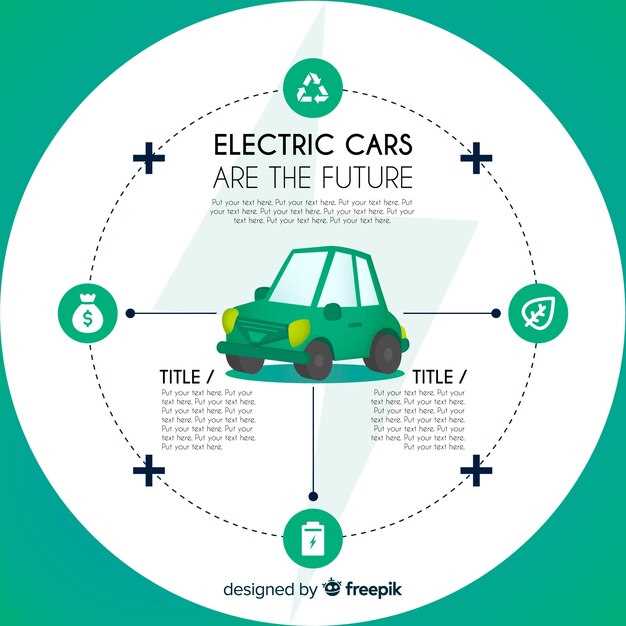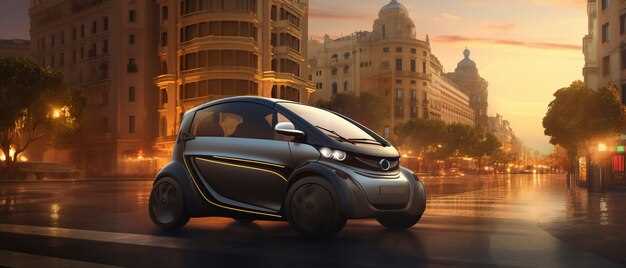Consider switching to an electric vehicle (EV) for lower maintenance costs and a cleaner environment. EVs typically require less frequent servicing, with fewer moving parts compared to traditional gas-powered cars. This translates to savings on both repairs and time spent at the mechanic.
Battery technology has advanced significantly, providing ranges that meet the daily needs of most drivers. Many electric cars now offer over 200 miles on a single charge, making them suitable for commutes and long trips alike. Charging infrastructure is rapidly expanding, with numerous public charging stations available, easing concerns about range anxiety.
Gas-powered vehicles often provide quicker refueling times, but they face increasing fuel prices. Consider this: electric car owners can charge their vehicles overnight at home, tapping into cheaper electricity rates, and avoiding fluctuating gas prices. Over time, these savings can accumulate significantly, benefiting your budget in the long run.
Environmental impact is another key factor. Electric vehicles produce zero tailpipe emissions, contributing to improved air quality. With renewable energy sources becoming more prevalent, the carbon footprint of EVs continues to decrease, making them an attractive option for eco-conscious individuals.
Ultimately, the choice between electric and gas-powered vehicles depends on personal preferences and specific needs. Evaluate your driving habits, budget constraints, and environmental goals to make a decision that works for you.
Understanding the Cost of Ownership for Electric vs Gas Vehicles
To gauge the cost of ownership for electric vehicles (EVs) and gas-powered cars, focus on three main aspects: purchase price, maintenance, and operational costs.
Electric vehicles often come with a higher upfront cost. However, many regions offer incentives that can significantly lower the initial expense. For example, federal tax credits or state rebates can offset a substantial portion of the price. Gas cars generally have lower starting prices, but they can incur higher long-term expenses due to fuel costs and maintenance needs.
Maintenance expenses favor electric vehicles. EVs have fewer moving parts, leading to lower maintenance requirements. Owners save on oil changes, exhaust system repairs, and other traditional car upkeep. On the other hand, gas vehicles need regular oil changes, filter replacements, and have more wear-and-tear components that can require costly repairs.
Operational costs show a distinct divergence. Charging an electric vehicle is generally cheaper than buying gasoline, especially with the rise of at-home solar systems and public charging stations. For example, charging an EV can cost around $5 to $15 for a full charge, compared to $40 to $70 for filling a gas tank, depending on fuel prices. Consider mileage as well; electric cars tend to get more distance out of a charge than gas cars do per gallon.
Insurance rates may differ, too. Electric vehicles can sometimes have higher insurance premiums due to their higher replacement costs, although this can vary. Shop around for quotes to find the best deal.
Factor in depreciation. Electric vehicles often hold their value well due to rising demand and incentives, while gas vehicles can depreciate faster, especially as fuel costs fluctuate.
By analyzing these components, you’ll gain a clearer understanding of the long-term financial implications of choosing between an electric or a gas-powered vehicle. Evaluate your driving habits, local energy costs, and available incentives to make an informed decision.
Evaluating Environmental Impact: Emissions and Sustainability
Electric vehicles (EVs) emit zero tailpipe emissions, significantly reducing air pollution in urban areas. In contrast, gas-powered vehicles contribute to greenhouse gas emissions, primarily carbon dioxide (CO2), during fuel combustion. According to the U.S. Environmental Protection Agency (EPA), light-duty gasoline vehicles release approximately 404 grams of CO2 per mile. EVs, while generating no emissions during operation, can still have an environmental footprint depending on electricity sourcing.
To assess sustainability, consider the entire lifecycle of each vehicle, from production to disposal. Manufacturing EVs often involves mining and processing materials like lithium, cobalt, and nickel for batteries, which can result in ecological disruption and carbon emissions. However, with growing innovations in battery recycling and alternative energy sources, companies aim to mitigate these effects. Transitioning to renewable energy for battery production also lessens the overall emissions associated with EV manufacturing.
- Electric Vehicles:
- Zero emissions during operation.
- Lower lifecycle emissions if powered by renewable energy.
- Improving battery recycling technologies.
- Gas-Powered Vehicles:
- High CO2 emissions contribute to global warming.
- Dependence on fossil fuels impacts energy security.
- Higher particulate matter emissions affect air quality.
Electrification of transportation aligns with sustainability goals, especially as the share of renewables in the energy grid increases. Anticipating future advancements, automakers are investing in sustainable practices, from sourcing materials responsibly to developing efficient recycling methods for end-of-life batteries.
Choosing an electric vehicle can significantly reduce your carbon footprint, especially as infrastructure for clean energy continues to expand. Supporting local initiatives aimed at increasing renewable energy usage will further enhance the sustainability of electric vehicles.
Charging Infrastructure Availability for Electric Cars
Access to charging stations for electric vehicles significantly influences the decision to switch from gas-powered cars. Finding reliable infrastructure is crucial for daily commutes and long-distance travel. Many cities and rural areas are expanding their charging networks, improving availability.
Public charging stations are often found in parking lots, shopping centers, and along highways. Major networks like ChargePoint, Electrify America, and EVgo provide extensive coverage. As of 2023, the U.S. has over 140,000 public charging ports, with fast chargers enabling quicker replenishment. Utilizing apps such as PlugShare or ChargeHub can help drivers locate nearby chargers efficiently.
Residential installations are another option to consider. Home charging stations make it convenient for electric car owners to charge overnight. Many utilities offer incentives or rebates for home charging setups, making them more affordable. Ensure that your electrical system can handle the additional load to maximize charging speed.
Some businesses, hotels, and restaurants are beginning to install charging stations as an added perk for customers. This trend is expected to grow, making it easier to incorporate charging into daily routines. Always check if charging is free or requires payment, and be mindful of the charging speed offered.
As the demand for electric vehicles increases, local governments and private companies are investing in enhancing and expanding charge station infrastructure. Tracking developments in EV policies and incentives can provide insights into future charging facilities in your area.
The growth of charging infrastructure plays a key role in the shift towards electric vehicles. Embrace new technologies like fast chargers and smart charging to optimize your electric vehicle experience. Reliable access to charging options greatly reduces range anxiety and supports a smooth transition to electric driving.
Maintenance Differences: What to Expect from Each Vehicle Type
Electric cars typically require less maintenance compared to gas-powered vehicles. Without an internal combustion engine, electric vehicles (EVs) eliminate the need for oil changes, fuel filters, spark plugs, and exhaust systems. This reduction in mechanical complexity significantly lowers ongoing maintenance costs.
Battery maintenance becomes a key focus for electric vehicles. Regularly checking the battery health is essential, along with monitoring cooling systems, which can prolong battery lifespan. Some manufacturers offer warranties for their batteries, often covering 8 years or 100,000 miles, ensuring peace of mind for owners.
Gas-powered vehicles, on the other hand, demand more frequent checks and services. Engine oil changes are necessary every 3,000 to 7,500 miles, depending on oil type. Regular maintenance also includes replacing air filters, fuel filters, and belts, which can add up over time.
Brake systems in electric cars often last longer due to regenerative braking, which reduces wear. In contrast, traditional vehicles may require brake pad replacements more frequently as they rely solely on friction for deceleration.
When it comes to tires, both electric and gas-powered cars benefit from regular rotations and alignments; however, electric vehicles might incur slightly higher wear due to their heavier weight, especially if acceleration is frequent.
In summary, expect lower maintenance costs and fewer service visits with electric vehicles. Gas-powered vehicles involve more routine checks and potential repairs, impacting both time and finances. Choose according to your lifestyle and maintenance preferences for the best experience.
Performance Metrics: Acceleration, Range, and Handling
Electric cars typically outperform gas-powered vehicles in acceleration. The instant torque provided by electric motors enables many models to reach 0-60 mph in under 4 seconds. For instance, the Tesla Model 3 Performance achieves this in just 3.1 seconds, while traditional sports cars often struggle to match this figure.
Range is another crucial factor. Most electric vehicles (EVs) now offer impressive ranges due to advancements in battery technology. The 2023 Hyundai Ioniq 5, for example, boasts a range of around 300 miles on a single charge. In contrast, gas-powered vehicles have a wider variety of range based on fuel tank size, but they typically average between 350 to 450 miles. However, with the increased availability of charging stations, EVs are closing this gap rapidly.
Handling also shows distinct differences between electric and gas-powered vehicles. Electric cars benefit from a lower center of gravity due to battery placement, enhancing stability and cornering capabilities. The Porsche Taycan, an electric sports car, demonstrates exceptional handling that rivals many traditional performance vehicles. Meanwhile, gas-powered options like the BMW M3 excel in responsiveness and engagement, providing a different driving experience.
In summary, when evaluating acceleration, range, and handling, electric cars often lead in immediate power and innovative engineering, while gas vehicles still hold their ground in long-range travel and some driving dynamics. Consider your driving habits and preferences to choose the best fit for your lifestyle.
Insurance and Resale Value Comparisons: What Buyers Should Know
Buyers should prioritize understanding insurance rates and resale values when considering electric cars versus gas-powered vehicles. Generally, electric vehicles (EVs) tend to have higher insurance rates due to their repair costs and specialized components. However, many insurers offer discounts for EVs, which can offset some of these expenses. Always compare quotes from multiple providers to find the best deal.
Resale value plays a significant role in overall ownership costs. Historically, gas-powered vehicles have held their value better than many electric counterparts. Yet, the market for EVs is expanding rapidly. Factors influencing resale value include brand reputation, battery life, warranty coverage, and technological updates. Buyers should check depreciation rates of models in both categories on sites like Kelley Blue Book or Edmunds before purchasing.
Below is a table comparing average insurance costs and resale values for popular electric and gas-powered models:
| Vehicle Type | Average Annual Insurance Cost | 3-Year Resale Value Percentage |
|---|---|---|
| Electric Vehicle (e.g., Tesla Model 3) | $1,200 | 75% |
| Gas-Powered Vehicle (e.g., Honda Accord) | $900 | 65% |
Buyers should also factor in available tax credits and incentives for electric vehicles, which can significantly influence total cost and resale value. Research any federal or state programs that might apply to your prospective EV to maximize savings.
Connect with local dealership experts and online forums to gain insights about market trends and ownership experiences. This knowledge aids in making a well-informed decision that aligns with your financial outlook.







